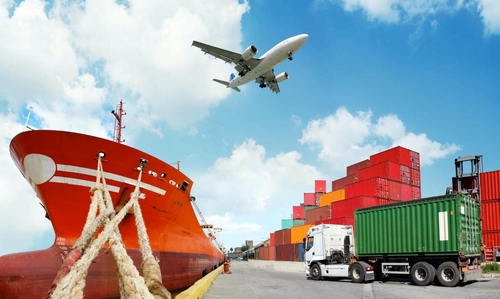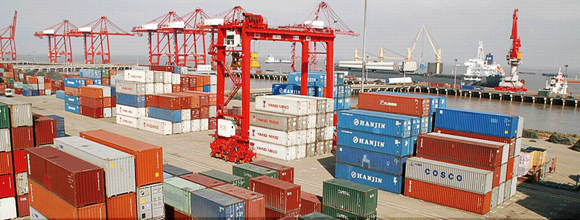The customs regimes of the Customs Union for the release of products for free circulation are necessary so that it can remain constant or be consumed in the relevant territory. There are certain requirements for these orders. Next, we consider the concept of the customs regime and its features. 
Legal requirements
Customs regulations and procedures are clearly defined in regulations. The requirements that the legislation makes should include:
- Mandatory payment of fees and taxes on products manufactured for free circulation.
- Compliance with agreed economic policies.
- Clear resolution of issues regarding the registration of this product. To implement this item, special customs clearance regimes are established.
Off-site processing times
They are determined by the Customs Committee by prior agreement with the Ministries of Economy, Trade and Industry. The terms of processing of products should correspond to the course of this process and its duration. As a condition for the partial or full exemption of such goods from import duties, their release for free circulation is advocated. The legislation on this subject provides the wording. Full exemption from customs duties on import is granted if the authorized body makes sure that the purpose of the processing was to repair products carried out free of charge in accordance with the provisions of regulatory enactments or the terms of the contract. An exception is the situation when the initial release of products for free circulation was taken into account the presence of a deficiency. Partial exemption from customs duties is provided by law in cases of paid repair of products. The Customs Code prohibits the replacement of processed goods with products of foreign origin.
Important point
If the person has not returned the goods to the customs territory back or was unable to import them within the established time limits, then they can be released from liability. This is possible if the fact of the irretrievable loss or destruction of processed products resulting from a catastrophe, accident or force majeure, shortage due to normal wear and tear or loss under normal conditions of transportation and storage, retirement from possession due to unlawful actions of officials or foreign authorities will be confirmed by consular offices. 
Economic Customs Regimes
They are necessary to ensure that the use of products in the designated territory was possible with partial or full exemption from duties, and without the application of government measures. The customs regime of temporary import or export is established by the Committee. The legislation does not set strict deadlines for these operations. However, normative acts establish a maximum limit over which these customs regimes may operate. He is two years old. If the terms during which these customs regimes are in effect have been violated, and the products, accordingly, have not been returned, then the products are moved to warehouses. They carry out temporary storage of products. Warehouses are managed by authorized bodies.
Regulatory requirements
The customs regime for the export of goods provides liability for an individual or company who exported the goods and did not ensure their transportation to the relevant territory.However, at the same time, a person may be exempted from recovery in cases established by law. All of them must be confirmed by documents of consular posts that operate in foreign countries. 
Stock
It, like products, may also fall under customs regimes. A number of features should be noted here. Customs regimes for the warehouse are designed to ensure storage of goods moved to the territory under appropriate control. Moreover, during the entire storage period, duties are not levied and a non-tariff regulation method is applied. In the legislation, warehouses are divided into two categories: closed and open. Both citizens and entrepreneurs, and customs agencies can own them. Organization and subsequent operation of the warehouse is allowed only with a license. The allowing document is issued by the Customs Committee. This provision does not apply to cases when warehouses are established directly by authorized bodies. In this case, we mean Customs structures.
Owner Responsibilities
The person responsible for the storage of products in the warehouse must:
- Do not allow the seizure of goods, except as part of customs control.
- Observe the terms of the permit.
- Do not create obstacles for customs control.
- Properly take into account products stored in the warehouse and submit a report on them and products in circulation to authorized bodies.

Fee payment
The responsibility for this operation with respect to products that are circulated within the customs warehouse lies with its owner. If the owner is an authorized control body, then the duty to pay the duties rests with the company or individual who deposited the products. The permissible period of keeping in a product warehouse is 3 years. The customs committee may shorten this period for certain categories of goods.
Expiration
In the case when the period of maintenance at the warehouse ends, the issue of transferring products to other customs regimes should be decided. Also, products can be deposited in places under the control of the authorities. These questions are detailed in a special instruction. According to it, one or another customs procedure may be applied to products stored in warehouses. The Instruction stipulates that the maintenance of products under control is carried out without levying duties and taxes, as well as without the use of non-tariff measures for the entire period of stay in specially equipped places until they are actually sent from the territory. The provisions also determine which rooms are considered a warehouse. Any specially equipped and equipped area intended for storage of goods in accordance with customs regulations is recognized as it. All these premises are considered a control zone. It is allowed to place any products under the customs regime of the warehouse, except those included in the list determined by the Government. 
Room requirements
The place, which is intended for the organization of the warehouse, must comply with fire safety standards, technical and sanitary standards. In addition, the premises must meet the following requirements:
- Along the entire perimeter of the territory, it is necessary to install fences that clearly indicate the control zone.
- The arrangement of the warehouse should completely exclude access to the products of strangers and the possibility of seizing products, except as part of customs control, to ensure the safety of products.
- The storage place is equipped with access roads, equipped with special certified equipment that is designed for weighing, as well as unloading and loading units.
Product Room
The placement of goods in the warehouse is carried out in accordance with the customs regime of temporary storage.When placing products, the application of the provisions of the cargo declaration is allowed. After the products are properly designed, the values located in the open part of the warehouse, which is used as a short-term storage place, must be moved to the rest of the room.
Basic operations
For products in stock, the following procedures apply:
1. To ensure safety:
- drying;
- ventilation;
- cleaning;
- formation of the optimum temperature of the medium (freezing, heating, cooling);
- packaging;
- applying preservatives and protective grease;
- anticorrosion treatment;
- staining to prevent rust and so on.
2. For the preparation of products for sale, any customs procedure from the following or several may be applied immediately:
- crushing of parties;
- repackaging;
- sorting;
- transshipment, loading, unloading;
- marking;
- testing;
- formation of shipments and so on.
Product Registration
When placed in a warehouse, its owner draws up the values in the relevant accounting documents. The papers should contain the following data:
- Date of product placement.
- Name of product.
- Net weight (kg) and number of seats.
- Numbers of accompanying papers.
- Date when the decision was made to issue.
- Customs Cargo Declaration Number.
Closed warehouses
These specially equipped places can be organized by persons who carry out storage of products intended for the implementation of professional activities. Closed warehouses can be used to maintain the owner’s own goods. Also in such places can be stored products that belong to third parties (by agreement). 
Free zones
Such customs territories are a relatively new phenomenon. For the first time, the rules of international customs law were applied to such zones in the Kyoto Convention of 1972. Domestic legislation on free customs territories, in general, is consistent with world acts regulating this area. The customs regimes of free warehouses and zones are those procedures in which the movement and use of foreign goods is carried out within the relevant boundaries or within the limits of places (premises). These operations are performed without collection of duties and taxes, as well as the use of non-tariff regulatory measures. Products may be placed in accordance with the rules applicable to the export of products under the customs regime of re-export. The free zone is formed by decision of the government. It, in turn, is adopted on the proposal of local authorities and the State Customs Committee.
